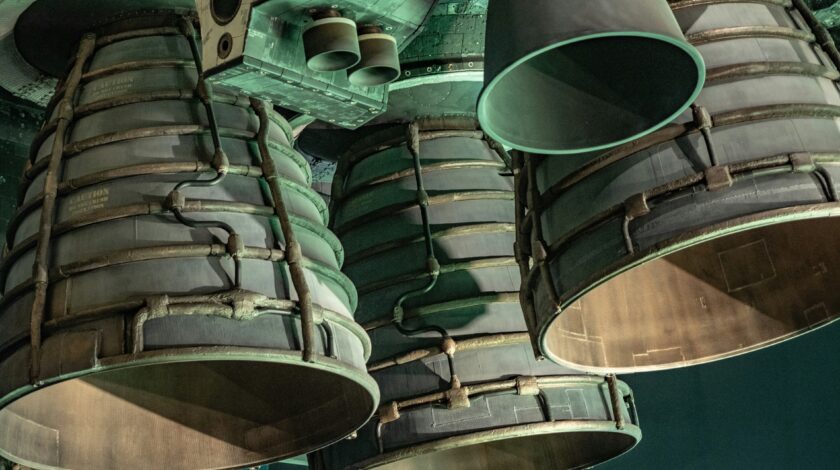Exploring the Pioneers of the Skies: An In-Depth Look at Aerospace Composites Companies
Introduction
The aerospace industry stands at the forefront of technological innovation, where precision and performance intersect to create some of the most advanced vehicles known to humanity. Central to this innovation are the materials that make up the aircraft themselves, particularly composite materials. Aerospace composites companies are at the heart of a revolution, developing and producing advanced materials that reduce weight, improve fuel efficiency, and enhance the overall performance of aircraft. This deep dive into the world of aerospace composites companies will illuminate the cutting-edge technologies that are propelling the industry forward.
The Rise of Aerospace Composites
Composite materials have been a game-changer for the aerospace industry. They are composed of two or more distinct materials that, when combined, produce a new material with properties superior to the individual constituents. In the context of aerospace, composites typically involve a combination of fibers such as carbon or glass, embedded in a matrix of epoxy or other polymers.
The use of composites in aircraft design has led to significant reductions in aircraft weight. This, in turn, translates to improved fuel efficiency and lower operating costs, a priority for airline operators in an era of environmental consciousness and economic challenges. The strength-to-weight ratio of composites is unmatched by traditional materials such as aluminum, making them an attractive choice for critical flight components.
Innovation Driven by Aerospace Composites Companies
The innovation in aerospace composites is not limited to the materials themselves. Aerospace composites companies are continually refining the manufacturing processes to create ever more efficient and reliable components. Techniques such as automated lay-up, resin transfer molding, and 3D printing are revolutionizing the way composite parts are produced.
These advancements allow for the creation of complex shapes and structures that were previously impossible or too costly to manufacture. The precision of these methods also reduces waste and increases the repeatability of high-quality components, which is essential in an industry where safety and reliability are paramount.
Key Players in the World of Composites
The landscape of aerospace composites companies is diverse, with key players ranging from large multinational corporations to niche specialists. Companies such as Boeing and Airbus are not just aircraft manufacturers; they also invest heavily in the development of advanced composite materials for their latest models.
On the other hand, dedicated aerospace composites companies like Hexcel, Toray Industries, and Teijin are recognized for their specialization in creating composite materials. They partner with aircraft manufacturers to provide the materials and expertise needed to bring cutting-edge designs to life. These collaborations are crucial as they push the boundaries of what is achievable in aerospace technology.
The Future of Aerospace Composites
The future of aerospace is inextricably linked to the development of composite materials. As environmental regulations become stricter and the demand for fuel-efficient aircraft grows, the role of aerospace composites companies becomes increasingly important. These companies not only have the task of creating better materials but also face the challenge of doing so sustainably.
Recycling of composite materials is one area where significant advancements are needed. The complex nature of composites makes them difficult to recycle using traditional methods. Aerospace composites companies are therefore investing in research to develop new recycling technologies that will make the industry more sustainable in the long run.
Aerospace composites companies are also exploring the use of bio-based resins and natural fibers to create more eco-friendly composite materials. Though these are still in the early stages of development, they offer the promise of a greener aerospace industry without compromising on performance.
The Economic Impact of Aerospace Composites
The economic impact of the aerospace composites industry cannot be overstated. It is a significant driver of job creation, technological advancement, and revenue generation. As the demand for composite materials grows, so does the need for skilled workers who can design, manufacture, and maintain composite components.
Moreover, aerospace composites companies play a crucial role in maintaining the competitiveness of the aerospace industry on a global scale. Countries that can develop and produce advanced composite materials have a clear advantage in attracting aerospace manufacturers and related businesses.
The strategic importance of these companies is reflected in the investments made by governments in both research and development and in the fostering of partnerships between the private sector and academic institutions. These collaborations ensure a continuous pipeline of innovation and expertise in the field of aerospace composites.
Conclusion
In conclusion, aerospace composites companies are at the epicenter of transformation within the aerospace industry, providing the materials that make modern flight more efficient, reliable, and sustainable. Through relentless innovation, these companies continue to push the boundaries of what is possible, shaping the future of air travel. As the industry evolves, the importance of composites—and the companies that develop them—will only become more pronounced, ensuring that the sky remains not just the limit but the canvas for human creativity and engineering prowess.

Comments are closed, but trackbacks and pingbacks are open.